After the recent discussion on modern Damascus steel vs. Wootz, I thought I would start a discussion on Tamahagane steel. I have a Hoken razor made from Hitachi Yasuki Steel. Such razors are sold as Tamahagane. But Yasuki steel is the modern Hitachi metals version of Tamahagane steel. The original Tamahagane steel was made from iron sand. I wonder if razors or knives made from the old school iron sand method are still around?
You are using an out of date browser. It may not display this or other websites correctly.
You should upgrade or use an alternative browser.
You should upgrade or use an alternative browser.
Tamahagane steel, is it still around?
- Thread starter Eastcoast30
- Start date
Steve56
Ask me about shaving naked!
Yes, you can still find Iwasaki tamahagane kamisori, and Tim Zowada makes his own version of it called ‘Timehagane’ albeit in smaller batches. The Japanese made all sorts of things from the lower grades, window bars, door harware, wagon parts, etc. In some of the images of Iwasaki’s workshop you can see pieces of old iron, and apparently he refined the not-so-great stuff by re-smelting it to remove impurities as Zowada also reportedly does.
Tamahagane comes out of the tatara as a spongy mass which was called ‘bloom’ in the west.
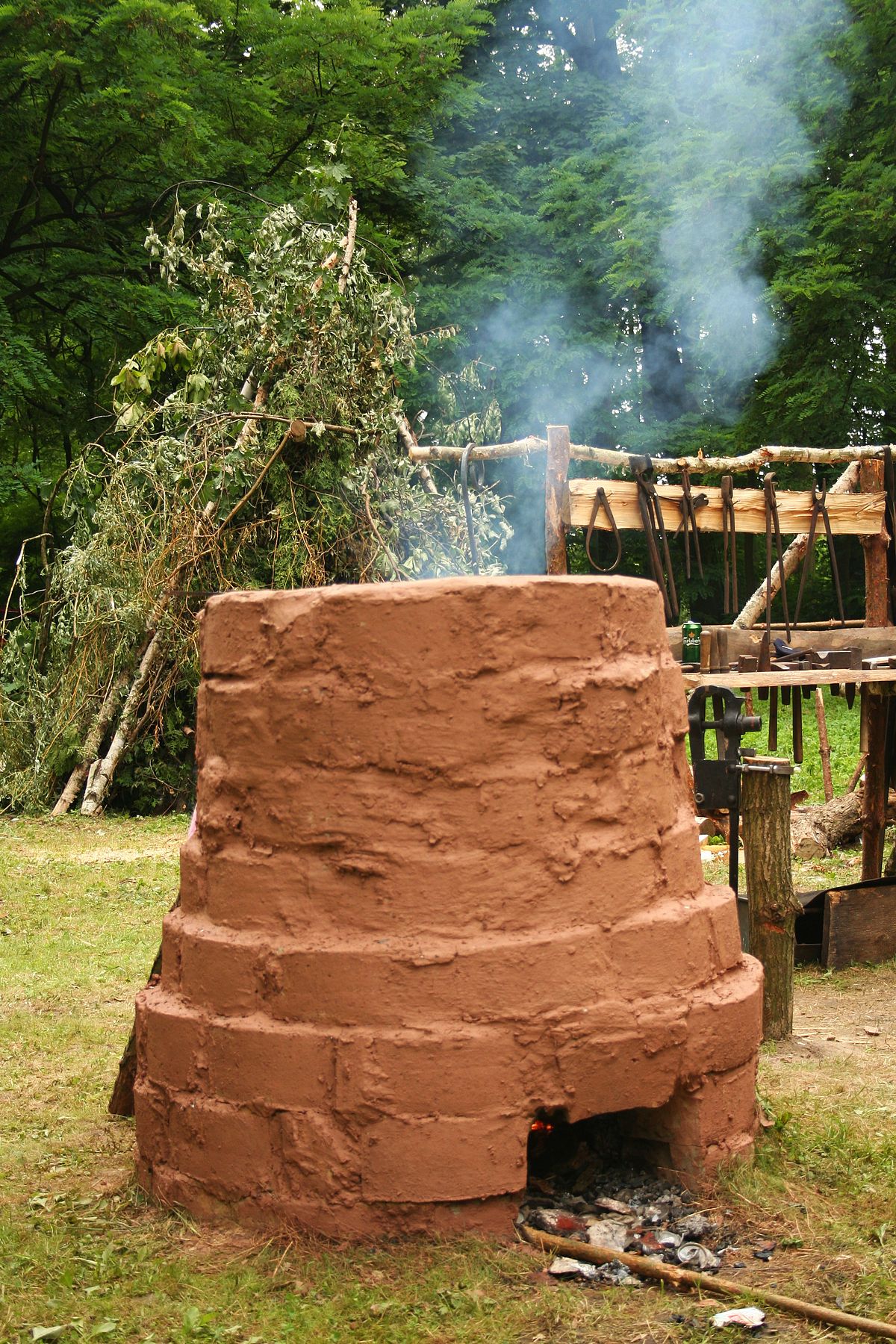
 en.wikipedia.org
en.wikipedia.org
Once you had iron, you could increase the carbon content and make steel.
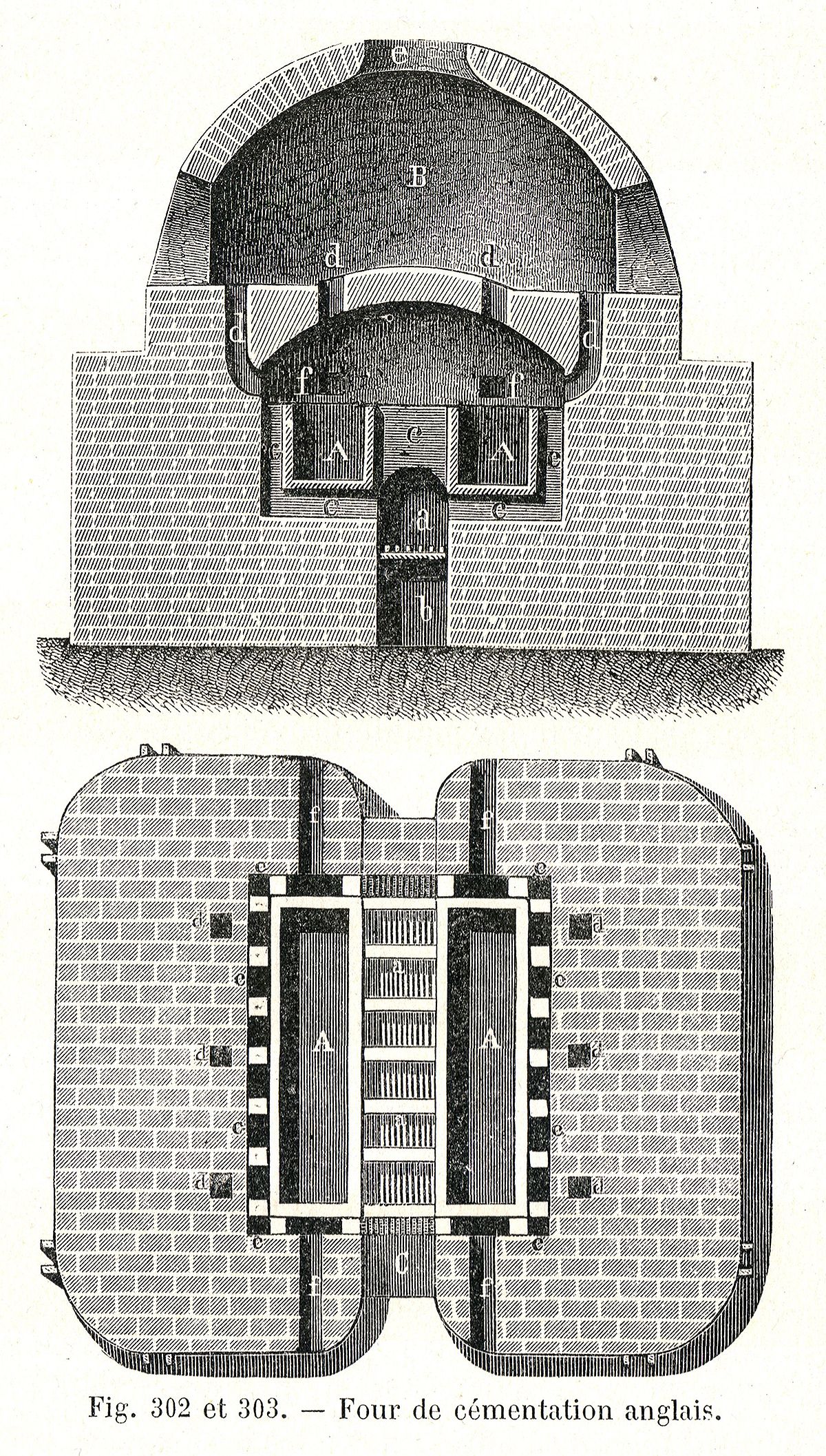
 en.wikipedia.org
en.wikipedia.org
It’s interesting that the east and west both had similar processes for making steel, and some of the old English cast steel razors were very fine grained and hard. It’s common to see modern razor steel with a ragged edge after removing a chip, etc with a 500 grit stone, but I have several late 1700 - early 1800 cast steel razors whose edges are straight and even at 500 grit. Good stuff, but too labor intensive for the return these days.
The point in posting these links is that this kind of steel was apparently not unique to Japan, other folks did something very similar, and if they were using Swedish ore, that was the best way to start. Just ask @Polarbeard
You can read more about the Yasugi Specialty Steels Here:
According to Alex Gilmore, Hitachi bought a small boutique steel maker and used the facility to make the specialty steels. Some razors are stamped as Y.S.S.2 or Yasugi Specialty Steel #2, aka shirogami (white steel, or white paper steel) #2.
I hope that this hasn’t bored you!
Tamahagane comes out of the tatara as a spongy mass which was called ‘bloom’ in the west.

Bloomery - Wikipedia
Once you had iron, you could increase the carbon content and make steel.

Cementation process - Wikipedia
It’s interesting that the east and west both had similar processes for making steel, and some of the old English cast steel razors were very fine grained and hard. It’s common to see modern razor steel with a ragged edge after removing a chip, etc with a 500 grit stone, but I have several late 1700 - early 1800 cast steel razors whose edges are straight and even at 500 grit. Good stuff, but too labor intensive for the return these days.
The point in posting these links is that this kind of steel was apparently not unique to Japan, other folks did something very similar, and if they were using Swedish ore, that was the best way to start. Just ask @Polarbeard
You can read more about the Yasugi Specialty Steels Here:
According to Alex Gilmore, Hitachi bought a small boutique steel maker and used the facility to make the specialty steels. Some razors are stamped as Y.S.S.2 or Yasugi Specialty Steel #2, aka shirogami (white steel, or white paper steel) #2.
I hope that this hasn’t bored you!
- Thread starter
- #3
Not bored, thanks! And yes, I have a French razor that is getting ragged as I try to hone out a chip with a 600 stone. I minored in metallurgical engineering, which accounts for my fascination with knives and razors (while making a dent in my wallet).
As others have said, tamahagane is still around. From a conceptual point of view, the process of making it is straightforward. It's labour intensive to make, so it is quite expensive. The smelting process itself, as well as making a useful bar out of it requires a lot of time and effort. People like Mike Blue and Wayne Portatz have learned it from 'the' head guy in Japan whose name eludes me atm.
At the end of the smelting phase, the process yields chunks of high carbon steel. Carbon content is high at this point. 1.5% or so, but also riddled with slag, inclusions, ... The steel is flattened, water quenched, and broken. Based on how well it breaks, the smith sorts it on carbon content. In Japan, choosing raw chunks of tamahagane is done in pecking order. The most senior sword smiths get first pick. Then the junior ones, and what is left goes to knife guys. Although Japan being Japan, I'm sure that many other factors go into the order as well.
anyway, the smith then makes a stack of pieces based on carbon content, and it getsheated, and forgewelded into a pancake. The pancake is split in half, forgewelded and flattened again, and folded. Folding is typically done 8 to 12 times. At the end of this process, 50 to60% of the material is lost in scale, and the carbon content has dropped to .6 to .7%. If the smith starts with a stack of material that is on the lower end of the carbon spectrum, the end carbon content is more like .4%
To make a sword, the high carbon material is forged to a U shaped bar, and a bar of low carbon steel is slotted into it. then it gets forgewelded into a solid bar, drawn out, and the rest of the sword making process follows. There are other constructions as well, but the U shaped cross section with low carbon steel inside is a common one.
It's worth pointing out that all the folding doesn't give the steel magic properties. In medieval Japan, they had only one way of making steel and that was this process. You start with material that is ugly, has inclusions, and varying carbon content. And then you make a more or less solid bar of low alloy medium carbon steel that needs support from low carbon steel to keep from breaking. A simple bar of 1060 or 1070 would be superior to folded tamahagane in terms of consistency and homogeneity.
At the end of the smelting phase, the process yields chunks of high carbon steel. Carbon content is high at this point. 1.5% or so, but also riddled with slag, inclusions, ... The steel is flattened, water quenched, and broken. Based on how well it breaks, the smith sorts it on carbon content. In Japan, choosing raw chunks of tamahagane is done in pecking order. The most senior sword smiths get first pick. Then the junior ones, and what is left goes to knife guys. Although Japan being Japan, I'm sure that many other factors go into the order as well.
anyway, the smith then makes a stack of pieces based on carbon content, and it getsheated, and forgewelded into a pancake. The pancake is split in half, forgewelded and flattened again, and folded. Folding is typically done 8 to 12 times. At the end of this process, 50 to60% of the material is lost in scale, and the carbon content has dropped to .6 to .7%. If the smith starts with a stack of material that is on the lower end of the carbon spectrum, the end carbon content is more like .4%
To make a sword, the high carbon material is forged to a U shaped bar, and a bar of low carbon steel is slotted into it. then it gets forgewelded into a solid bar, drawn out, and the rest of the sword making process follows. There are other constructions as well, but the U shaped cross section with low carbon steel inside is a common one.
It's worth pointing out that all the folding doesn't give the steel magic properties. In medieval Japan, they had only one way of making steel and that was this process. You start with material that is ugly, has inclusions, and varying carbon content. And then you make a more or less solid bar of low alloy medium carbon steel that needs support from low carbon steel to keep from breaking. A simple bar of 1060 or 1070 would be superior to folded tamahagane in terms of consistency and homogeneity.
This is what it more or less looks like after the tatara process. This is from wayne potratz

Great information, thank you.
Tim Zowada also makes his own Tamahagane he calls Timahagane.
Tim Zowada also makes his own Tamahagane he calls Timahagane.
Correct. And bob kramer's steel is referred to as bobahagane.
- Thread starter
- #10
Great information, thanks.
Correct. And bob kramer's steel is referred to as bobahagane.
Love it!
This one is made from bobahagane. Rubies in the tail and hybrid stabilized fossil bone and resin scales.

And this one is a body from damascus made by me, with edge material that is tamahagane that has been smelted by Wayne Potratz using traditional methods. The handle is stabilized burl, and the bolster stabilized fossil bone. The removable scales are from the same bone / wood.


And this one is a body from damascus made by me, with edge material that is tamahagane that has been smelted by Wayne Potratz using traditional methods. The handle is stabilized burl, and the bolster stabilized fossil bone. The removable scales are from the same bone / wood.
This is a completely different animal. It is authentic tamahagane from a 1500s katana that was broken in combat. I got this still from a Japanese collector. I was able to make a rubbing of the mei (the chiseled kanji on the tang) and I have been able to identify the name of the smith, some details about his life etc.
What is the most awesome thing to me is that I was able to preserve the original heat treatment and hamon. So the shaving edge that touches your face is the edge that has been put there by Miyoshi Nagamichi, 500 years ago!



In the picture it's very hard to see because at the time I didn't really understand how to bring out the hamon very well.
What is the most awesome thing to me is that I was able to preserve the original heat treatment and hamon. So the shaving edge that touches your face is the edge that has been put there by Miyoshi Nagamichi, 500 years ago!
In the picture it's very hard to see because at the time I didn't really understand how to bring out the hamon very well.
Slightly off topic. I have heard people describe Yasugi/Yasuki Speciality Steel (YSS) as a modern version of tamahagane. Is YSS also made from iron sand, and does YSS also have have high carbon content - like greater than 1.25%?
I have read Hitachi – Y.S.S. (Yasuki Speciality Steel) | Fikira (wordpress.com) and was not able to answer these questions.
I have read Hitachi – Y.S.S. (Yasuki Speciality Steel) | Fikira (wordpress.com) and was not able to answer these questions.
Very interesting and reading following this thread
Only learning about razor metals grinds and this type of steel
I have two razors recently obtained with this steel
First One sending out to be honed as it appears need a pro touch but steel feels like awesome kinda on soft if touch to face, cant wait see if razor is amazing ,,, verdict awaiting 5/8
Pic#2,,,, took chance and struck gold,,
Amazing steel and grind,
Vintage Meiho 170 Deluxe Tamako Tamahagane Japanese straight
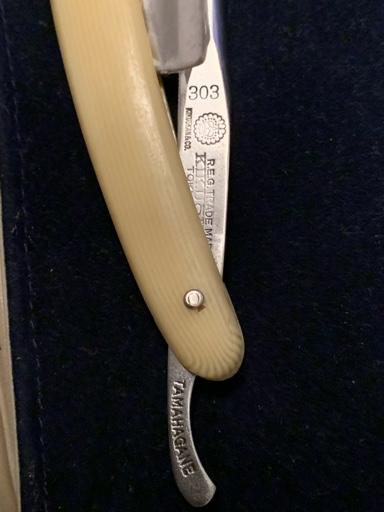
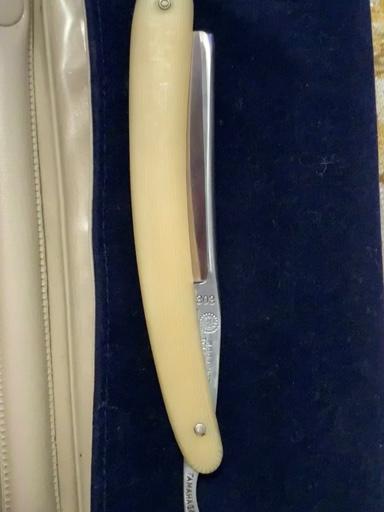
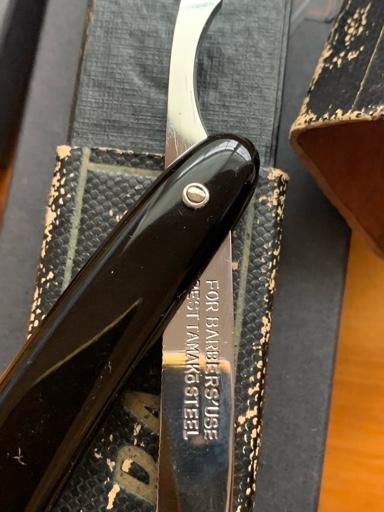
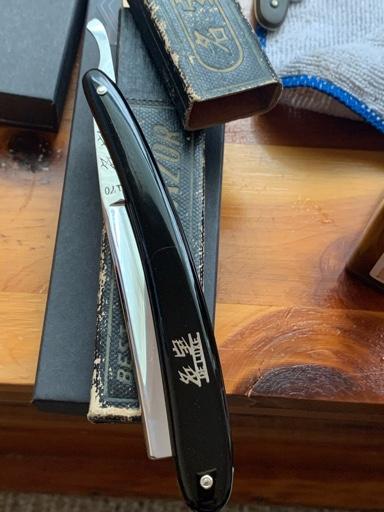
This razor steel feels looks, nothing like first razor steel,, a carbon steel look but acts like no other steel ive experience,, feels super smooth and soft but deadly sharp, easy to hone and I suspect, amazing edge retention,,,,, 20.8 blade
This artisan appears made a limited run and apoears he was a master artisan
Above razor has only 4 shaves but is climbing up to #1,,,,, but fili, cape, tanifuji, Heljestrand,, are giving new guy static,,, saying you must be proven,,,
First razor jury out awaiting to send to doc for honing ,
Just reporting
Only learning about razor metals grinds and this type of steel
I have two razors recently obtained with this steel
First One sending out to be honed as it appears need a pro touch but steel feels like awesome kinda on soft if touch to face, cant wait see if razor is amazing ,,, verdict awaiting 5/8
Pic#2,,,, took chance and struck gold,,
Amazing steel and grind,
Vintage Meiho 170 Deluxe Tamako Tamahagane Japanese straight




This razor steel feels looks, nothing like first razor steel,, a carbon steel look but acts like no other steel ive experience,, feels super smooth and soft but deadly sharp, easy to hone and I suspect, amazing edge retention,,,,, 20.8 blade
This artisan appears made a limited run and apoears he was a master artisan
Above razor has only 4 shaves but is climbing up to #1,,,,, but fili, cape, tanifuji, Heljestrand,, are giving new guy static,,, saying you must be proven,,,
First razor jury out awaiting to send to doc for honing ,
Just reporting
Slightly off topic. I have heard people describe Yasugi/Yasuki Speciality Steel (YSS) as a modern version of tamahagane. Is YSS also made from iron sand, and does YSS also have have high carbon content - like greater than 1.25%?
I have read Hitachi – Y.S.S. (Yasuki Speciality Steel) | Fikira (wordpress.com) and was not able to answer these questions.
Not really. I do not know where they start from, but I know it is made using modern processes, not tatara. So in that sense is is nothing like tamahagane. It is listed as 1.1% carbon steel.
Note that going very high in carbon steel doesn't automatically make it 'better'. One of the reasons tamahagane is made with such a high carbon content is that it needs to be refined with a folding process. The folding process is used for driving out all (most) of the impurities and crud from the smelting. By the time the steel is forged down to a relatively homogenous bar, about half the material is lost in scale, and the carbon content has dropped from roughly 1.4% to 0.7%
Similar threads
- Replies
- 14
- Views
- 1K
- Replies
- 15
- Views
- 2K
- Replies
- 16
- Views
- 2K
- Replies
- 27
- Views
- 973
